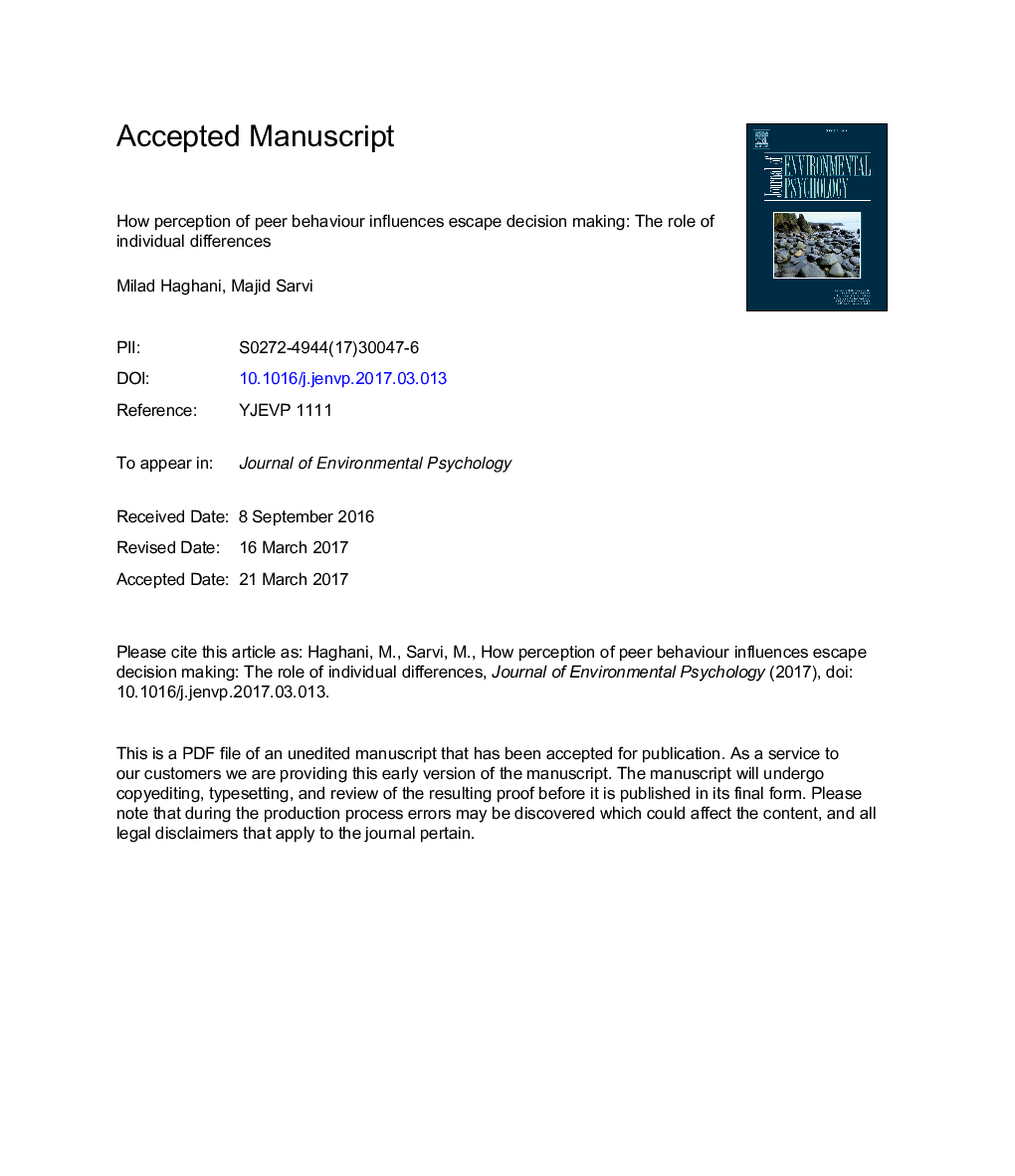| Article ID | Journal | Published Year | Pages | File Type |
|---|---|---|---|---|
| 5034864 | Journal of Environmental Psychology | 2017 | 59 Pages |
Abstract
Escape behaviour of humans during emergencies in crowded environments is typically assumed to follow a so-called “panic” model in which the population is made up of homogeneous individuals whose decisions are primarily governed by their follow-the-majority instinct. Here, we have revisited this assumption using experimental observations, econometric modelling and computer simulation with a particular focus on the role and the nature of individual differences in perception of peer behaviour. The results suggested that, in choosing their escape strategies, individuals perceive the decisions of their peers differently depending on the level of available information (i.e. choice ambiguity). Furthermore, heterogeneous perception of peer influence was found among individuals. The perception variation was better represented by discrete categories than by a continuum based on both individual-level and aggregate measures. Latent-class analyses revealed two major behavioural types. The type that displays a stronger propensity for following others comprises the minority.
Keywords
Related Topics
Social Sciences and Humanities
Psychology
Applied Psychology
Authors
Milad Haghani, Majid Sarvi,
